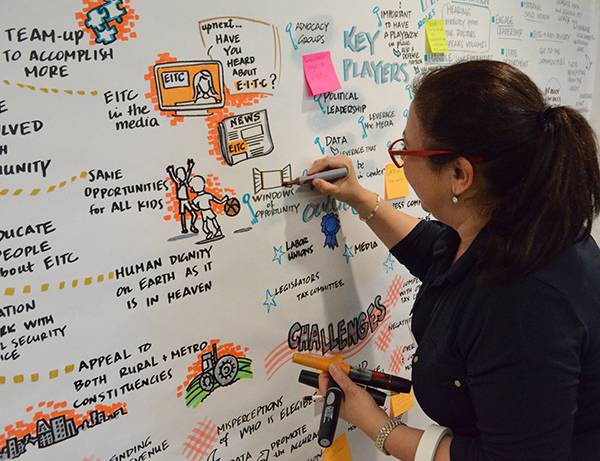You are here
Improving Health Outcomes Through Earned Income Tax Credits
Did you know that poverty can lead to poor health outcomes? And did you know that 7.5 million families lived in poverty in 2018, according to the U.S. Census Bureau?
The CDC Foundation recently published its Earned Income Tax Credit (EITC) Public Health Action Guide for public health care professionals. This guide includes information on EITCs, how EITCs keep more families and children above the poverty line, and their link with positive health outcomes, especially among mothers and children.
One effective policy intervention for some working families is the EITC. EITCs help eligible families in several ways—from putting money back in the pockets of working people, to reducing food insecurity, to boosting savings and helping people accumulate other assets, to freeing up money for childcare expenses, medical care and healthy food.
It’s important for public health practitioners to understand the benefits of EITCs. EITCs help low-to-moderate-income working people keep more of the money that they earn by paying lower taxes or getting a bigger tax refund. EITCs are one of the interventions that addresses the social determinants of health in the Health Impact in 5 Years (HI-5) Initiative. HI-5 is a Centers for Disease Control and Prevention (CDC) initiative that shifts the focus beyond traditional clinical approaches to health and explores social and environmental approaches that improve population health. With funding from the Robert Wood Johnson Foundation, CDC Foundation is examining the role of public health in two of the HI-5 interventions.
According to CDC, EITCs are associated with direct positive health outcomes including reductions in infant mortality and preterm births as well as improvements in birthweight and maternal health. Indirect effects may include increased test scores in school, graduation rates and college enrollment, with subsequent impact on future employment rates and earnings, all associated with improved health outcomes.
The goal for this guide is to educate public health practitioners on the benefits of EITCs and provide them with the data to inform families, partners, advocates and legislators. In today’s economic climate, now more than ever, the EITC is an effective policy that could have a positive impact on low-to-moderate-working families and their children.

